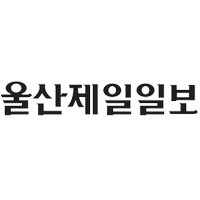-550,000 people in February, 12 months in coronavirus ↓ -Slightly improved employment in February after lowing in January
-Easy distance and resumption of public jobs
-The number of unemployed has decreased in 3 months
The number of employed in Ulsan last month decreased by 19,000 from a year ago due to the cold wave of COVID-19 employment.
However, the decline was reduced from January, when the previous’employment shock’ hit, due to the easing of social distancing.
According to the’February Ulsan Employment Trend’ released by the Southeast Regional Statistics Office on the 17th, the number of employed in Ulsan last month was 550,000, down 19,000 (-3.3%) from the same month last year.
The decline in the number of employed has been continuing for 12 consecutive months since March last year, when the Corona 19 incident in earnest.
However, compared to January, when 27,000 people fell, the decline decreased in last month.
In January, the base effect of strong employment in January last year (+14,000 people), the effect of strengthening social distancing, and public job vacancies during the year-end and New Year period resulted in the largest decrease in the number of employed since the Corona 19 incident. The magnitude of the decline was the second largest ever.
Last month, the base effect of strong employment in February last year (+10,000 people) worked, but the decline in the number of employed decreased as social distancing was eased and the gap in public jobs was also filled.
On a seasonally adjusted basis, the number of employed in February increased by 10,000 from January, turning to an increase in three months since last November (+2,000).
The employment situation in Ulsan reached a low in January and is improving relatively in February.
In the wholesale, retail and lodging and restaurant businesses (-17,000 people), a face-to-face service industry that is greatly affected by Corona 19, the number of employed continued to decline, but the decline was less than in January. The social overhead capital and other service industries also decreased by 17,000 people from the same month last year, but decreased by 22,000 people from the previous month.
Last month, among the employed in Ulsan, the manufacturing industry also decreased by 1,000 from a year ago. The manufacturing industry has declined for 64 consecutive months since October 2015. However, the decline has been decreasing for six consecutive months after peaking in August last year (-19,000 people).
In addition, businesses, individuals, public services, and others decreased by 4,000 from a year ago, and agriculture, forestry, and fisheries also decreased by 1,000. On the other hand, the construction industry increased by 4,000 amid the booming real estate market.
By job position, the number of wage workers decreased by 12,000, but the decline was less than in January (-21,000).
Of these, temporary workers and daily workers decreased by 11,000 and 5,000, respectively, while regular workers increased by 4,000.
The number of non-wage workers decreased by 7,000, while the number of self-employed fell by 4,000.
Last month, the number of unemployed people in Ulsan recorded 26,000, down 5,000 (-16.8%) from a year ago.
The unemployed people, which had been on the rise since December of last year, turned to decline after three months.
In January, the number of unemployed people was 35,000, an increase of 4,000 compared to the same month last year, and the number of unemployed people was the second highest ever after April 2018 (36,000).
The unemployment rate also improved slightly from the previous year. The unemployment rate last month was 4.6%, down 0.7 percentage points from the same month last year.
In January, it was 6.1%, the highest in 21 years and 5 months after August 1999, just after the financial crisis of the International Monetary Fund (IMF).
Last month, the Ulsan employment rate was 57.1%, down 1.9%p from the same month last year. The employment rate for those aged 15 to 64, which is the comparison standard of the Organization for Economic Cooperation and Development (OECD), fell 1.9 percentage points to 57.1%.
The economically active population was 577,000, a decrease of 24,000 (-4.0%) compared to the same month last year, and the inactive population was 387,000, an increase of 23,000 (6.3%).
Reporter Kim Ji-eun
Copyright holder © Ulsan Jeilbo Unauthorized reproduction and redistribution prohibited
